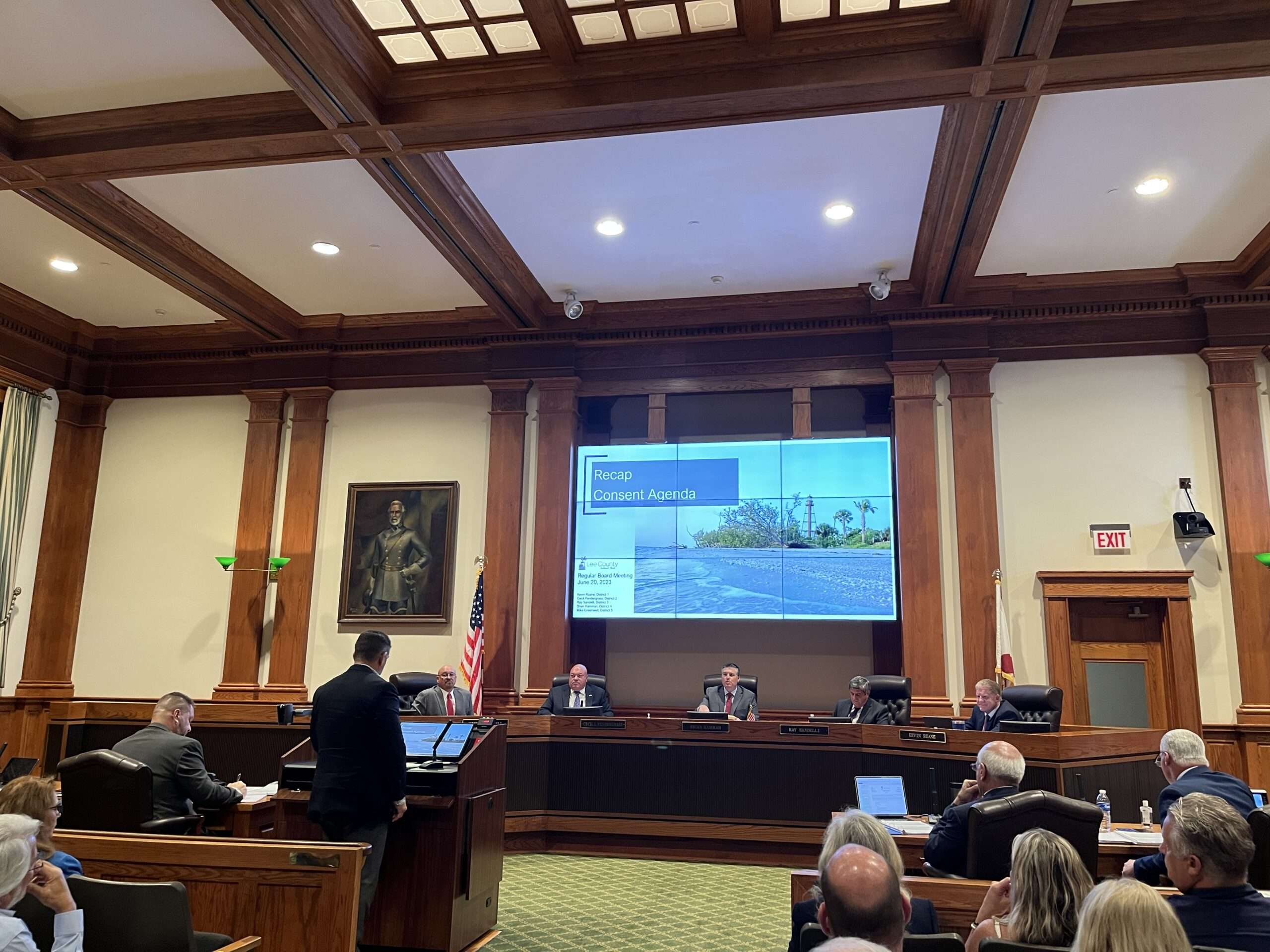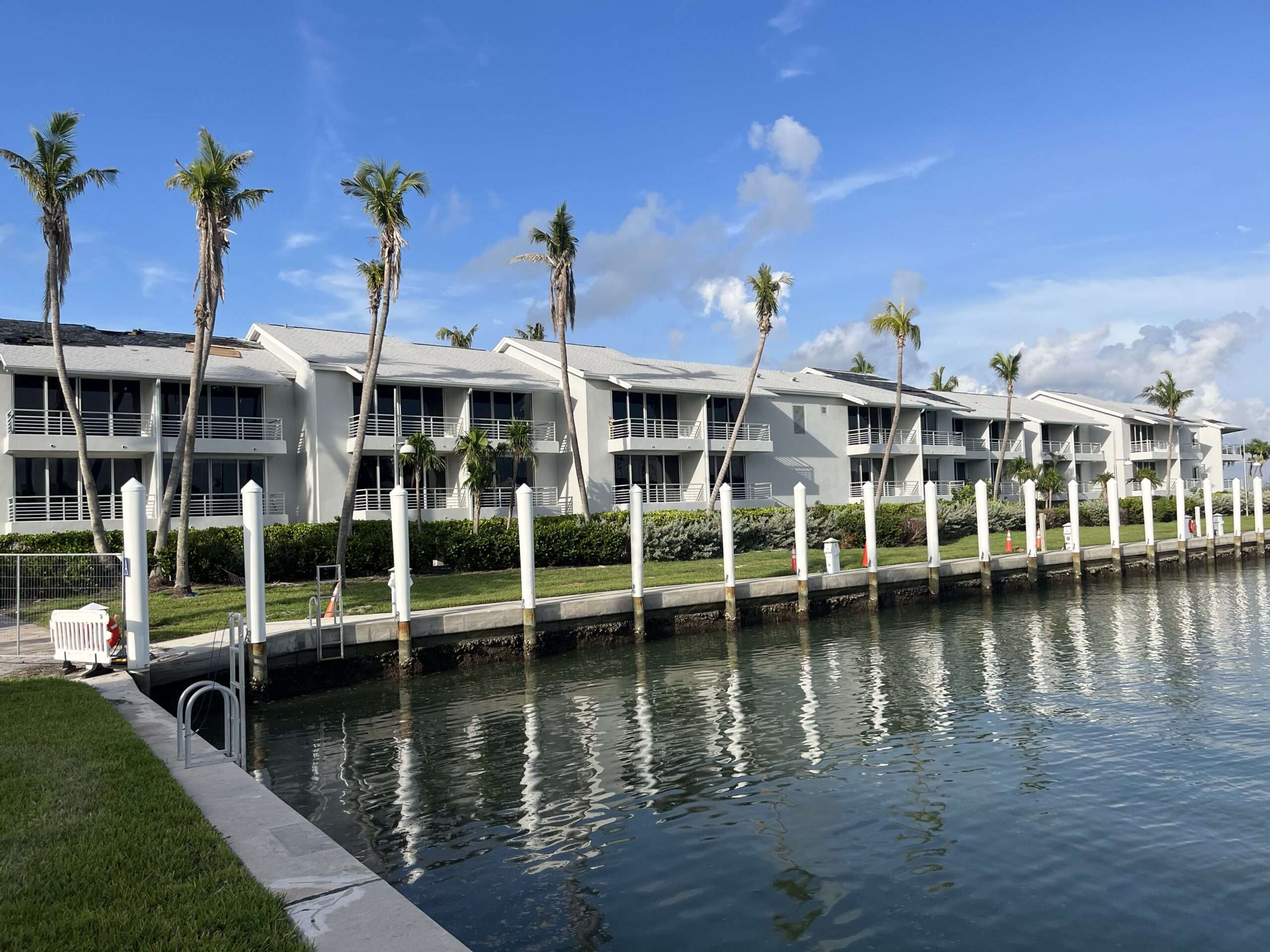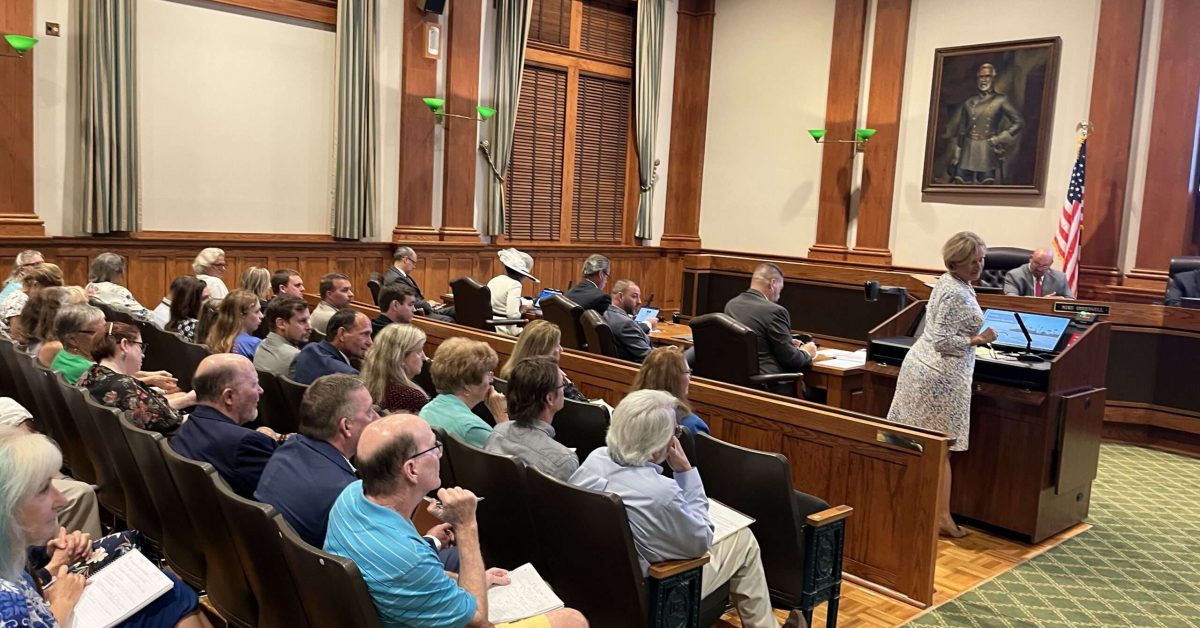Many members of the Sanibel and Captiva Island community walked away from a Lee County Board of Commissioners meeting today pleased—for now—that the aesthetics of where they live won’t be changed forever. However, they are guarded about what could happen next.
Thousands of island residents have been emailing county commissioners in recent days, pleading with them not to vote for amending the Lee County Development Code, which would have allowed unincorporated Lee County, including the South Seas Island Resort on Captiva, to build structures up to 75 feet high.
Instead of voting today, Commissioner Mike Greenwell submitted a motion to postpone the public hearing to Sept. 5.
Many island community members were glad the vote didn’t occur today, with Sanibel Mayor Richard Johnson speculating the vote likely wouldn’t have gone in their favor. Of the commissioners he spoke to, Johnson said only Greenwell and Kevin Ruane, a former Sanibel mayor, had told him they would have voted no to amending the land development code.
 Prior to the commissioners all agreeing to the motion to postpone, about two dozen island residents and other citizens took advantage of their 3 minutes of public input to urge the commissioners against allowing additional height at South Seas.
Prior to the commissioners all agreeing to the motion to postpone, about two dozen island residents and other citizens took advantage of their 3 minutes of public input to urge the commissioners against allowing additional height at South Seas.
They argued additional rooms and height at the resort would be bad for the surrounding environment at nearby J.N. “Ding” Darling National Wildlife Refuge and bad for hurricane resiliency, further clogging roads during future hurricane evacuations.
“I think this is exactly what we need to do,” Johnson said during his turn for public comment. “I think we need to get all the stakeholders at the table. This is a big change. We should have done it all prior to this. What I would look forward to is exactly what Commissioner Ruane talked about. An opportunity to engage the community.
“In Lee County, everyone knows and understands the importance of resiliency. It’s our barrier island. I look forward to the conversations we can have, so we can talk about resiliency. I look forward to the conversations we can have in September that can make us more resilient.”
Greg Spencer, CEO of Timbers Co., a co-owner of South Seas, promised to do a better job of communicating with the island community about his plans to redevelop the resort, which was devastated by Hurricane Ian. Under current codes, Spencer said South Seas would choose not to rebuild the hotel and to build condominiums instead. He is hoping to rebuild the hotel three stories above the new ground level of 18.6 feet, which could take the structure up to about 63 feet.
“We have no intention to pursue structures up to 75 feet,” he said.
After that portion of the meeting, Spencer said he would be willing to schedule as many meetings as desired by island stakeholders.
 “I’m happy to come down and have those conversations,” Spencer said, “and look, at some point in time, people will either agree or disagree. I do think there’s some divergent agendas, and that’s OK. You know, we’ve experienced that in every community. But, you know, we’re prepared to make hundreds of millions of dollars of investments to bring this back.”
“I’m happy to come down and have those conversations,” Spencer said, “and look, at some point in time, people will either agree or disagree. I do think there’s some divergent agendas, and that’s OK. You know, we’ve experienced that in every community. But, you know, we’re prepared to make hundreds of millions of dollars of investments to bring this back.”
Jay Brown, president of the Captiva Community Panel, which advises Lee County on Captiva issues, said he couldn’t speak for the panel, but he could speak for himself in saying he wanted South Seas to be successful. However, he also wanted its owners to be more transparent about any proposed changes. He was not in favor of any additional height or density.
“The problem that we have is we were not consulted through this whole process,” Brown said. “We don’t know what South Seas wants to do.”
The public comments helped Spencer understand he had to do a better job of communicating with island residents, he said.
“I think the biggest takeaway is that people are passionate about their island,” Spencer said. “I think that’s great. We want that. I don’t want people who are indifferent to what their community looks like. That is what we look for.
“We’ve built in some of the toughest areas in the world. Tuscany, [Italy]; Napa, [California]; Aspen [and] Vail, [Colorado]. We’re in some tough places, and we’ve found a way to fit into those communities. But I think the passion is there. What we need to do is educate people as to what the facts are. Everybody says we are anti-resiliency, well, we funded the resiliency plan. That’s where we could have done a better job of getting the word out on what we’re trying to do.”





